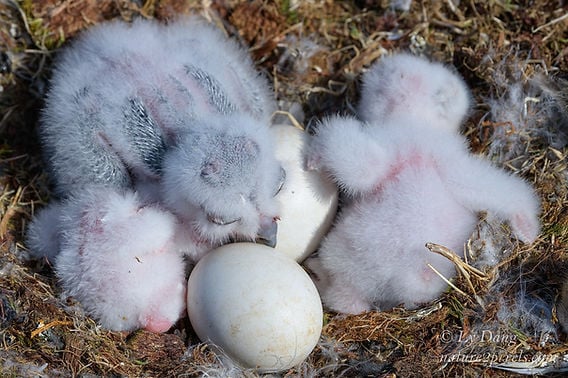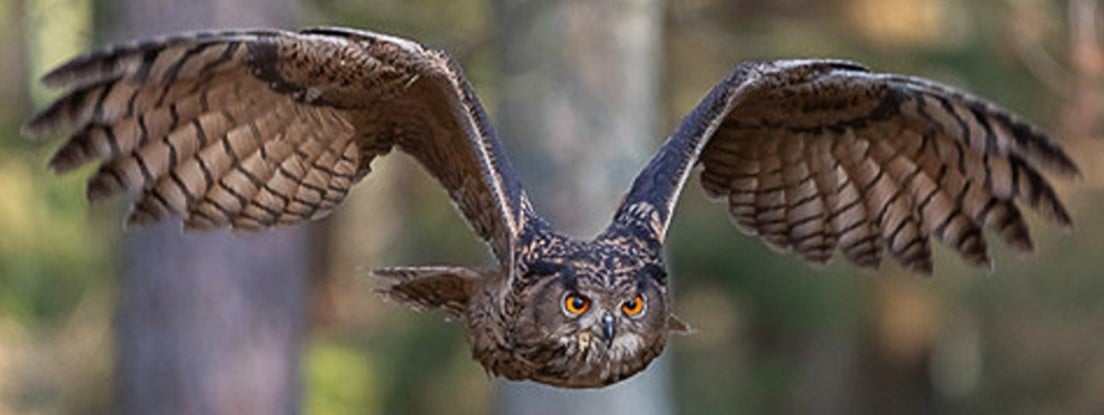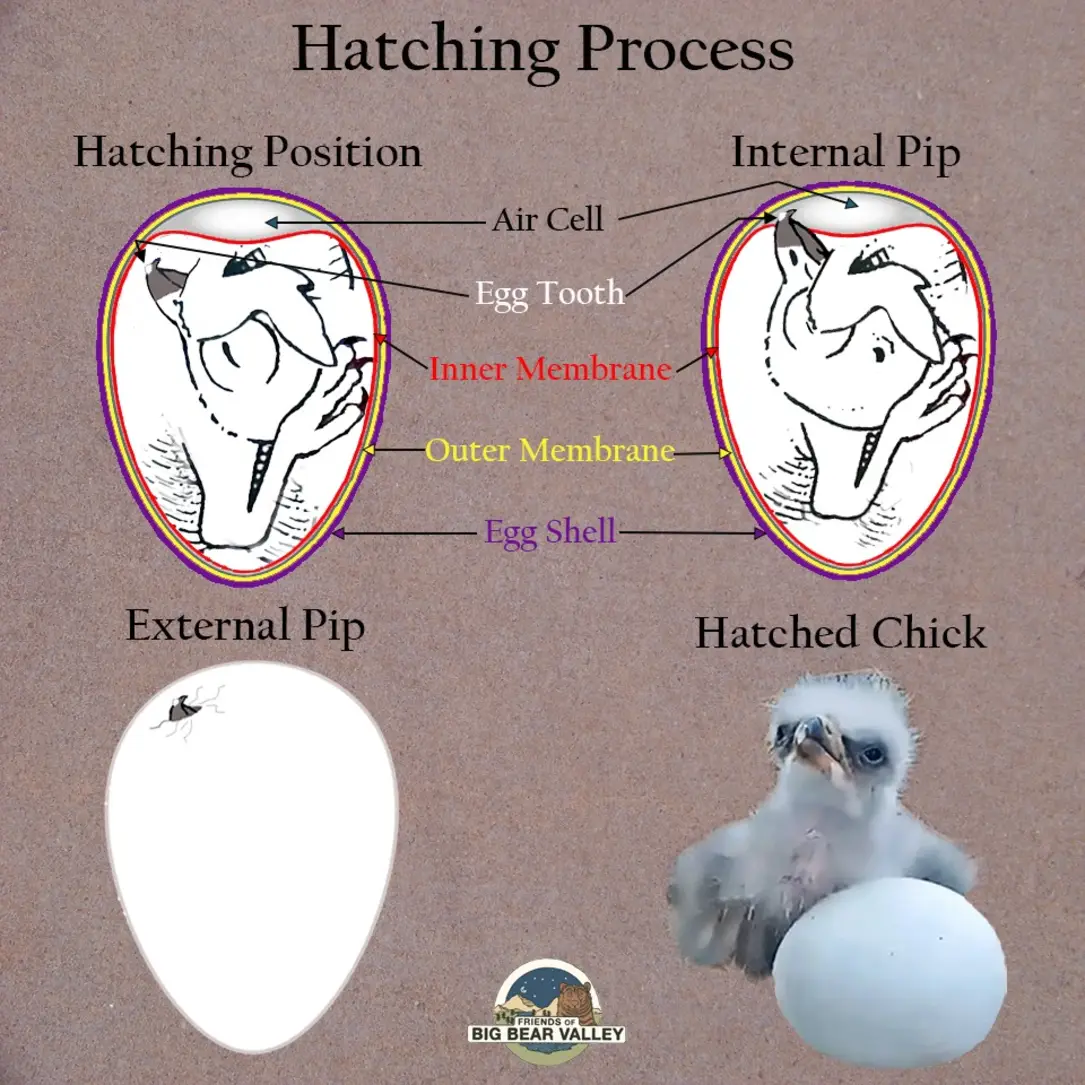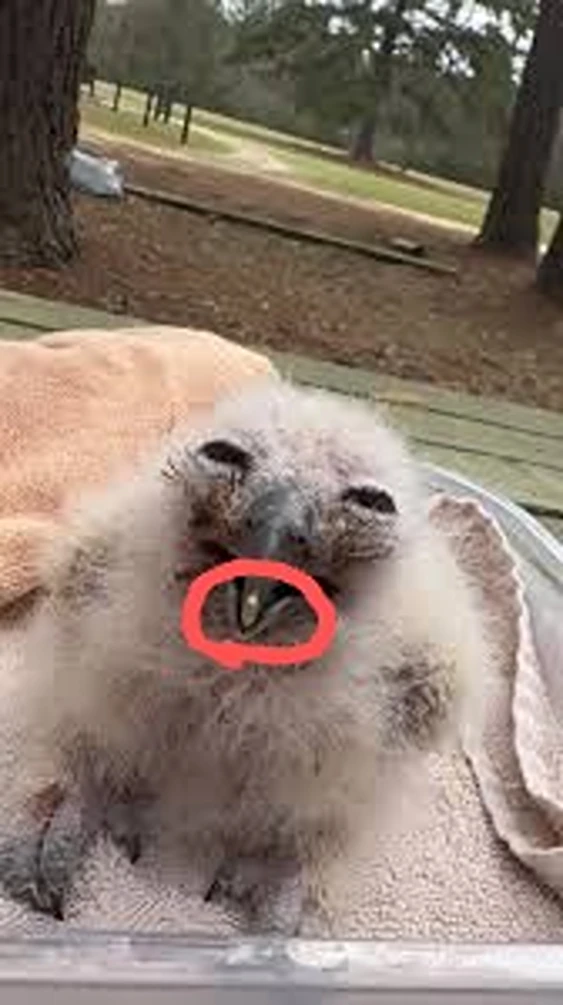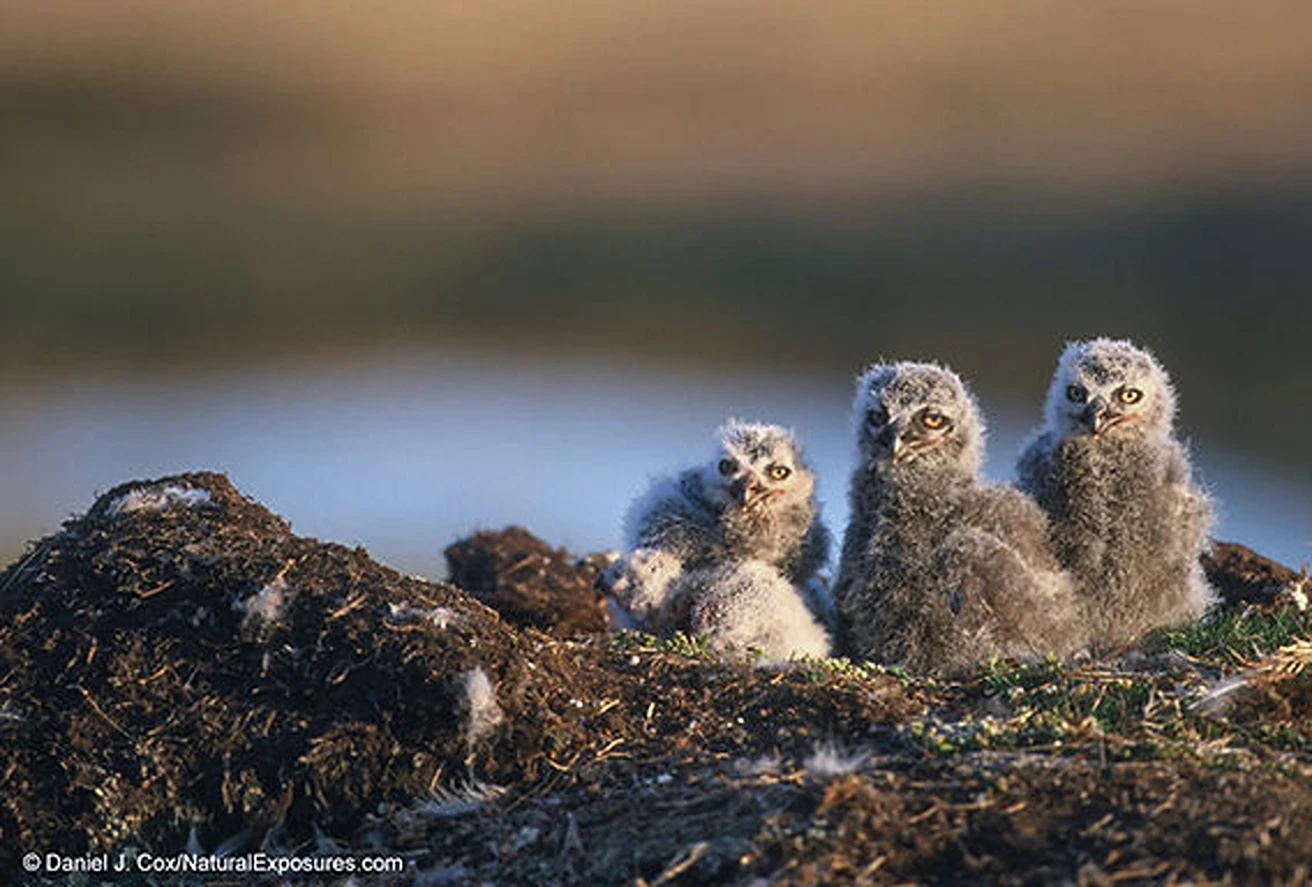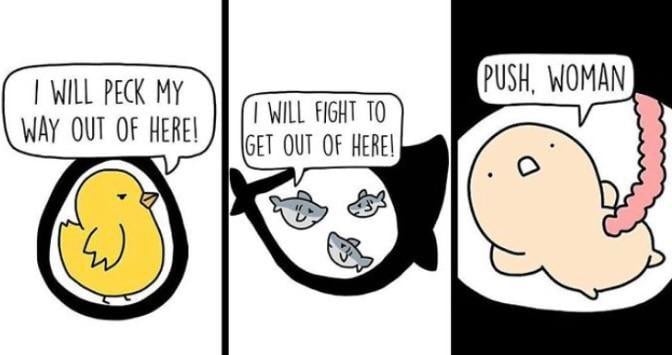Photo of Snowy Owl chicks.
This write up is about bald eagles, but it's the best description I've read about the hatching process. Most popular media makes hatching look like a quick thing, but it is an intense test of endurance, requiring special anatomy and has plenty of opportunity for danger.
As we are approaching Pip Watch, it's time to talk about the Hatching Process and what it involves.
As the chick reaches maximum size inside the egg, the amount of oxygen supplied through the egg membranes becomes insufficient. Sitting comfortably inside the egg is no longer an option, it's time to go and do some hard work!
Hatching is a very strenuous process that usually takes between 1 and 3 days from start to finish. It is a major test for the chick.
First things first: the chick has to assume a very special Hatching Position inside the egg with the head tucked under the right wing and the beak pointing toward the Air Cell. The Air Cell is located at the blunt end of the bald eagle egg. It slowly expands as the inner membrane drapes over the chick and the remaining yolk and fluids are absorbed into the chick's belly. These nutrients will support the little one through the entirety of the hatching process and beyond.
The chick's beak has a special sharp protrusion at the top, called the Egg Tooth, which will aid greatly in breaking through the egg membranes and the hard egg shell. The Egg Tooth can be visible after hatching and disappears slowly as the beak grows around it. Sometimes, it remains visible even after several weeks!
As the oxygen level continues to decrease, the Hatching Muscle at the back of the neck starts contracting. This is the best developed muscle the chick currently has, and it will play a crucial role in the process. Internal Pipping occurs once the Egg Tooth pierces through the inner membrane and the chick breaks into the Air Cell, taking its first gulp of air. Once that is accomplished, the chick will need about a day to get a lot of rest and adapt to breathing air, while the membrane responsible for the oxygen continues to recede slowly and the remaining fluids are absorbed. At this time the chick is able to vocalize softly. Internal vocalizations may be hard to hear on cameras even with highly sensitive microphones, but Jackie and Shadow (the eagle parents) should be able to hear the little chirps just fine.
External Pipping occurs once the oxygen level decreases again, prompting the chick to use the Hatching Muscle and the Egg Tooth to poke the first crack in the egg shell visible to us. The Initial Pip often looks like a small, star shaped raise or a hair width crack in the smooth surface of the eggshell. Once the chick pips externally, it will need more rest before hatching contractions can resume again, expanding the Initial Pip and turning it into a larger Pip Site. The chick will continue to vocalize between the periods of rest and sleep, and we are usually able to hear those vocalizations with our sensitive microphone.
The final effort occurs when the chick rotates inside the egg by pushing with its legs while simultaneously using the Egg Tooth to scrape the eggshell, effectively "unzipping" itself. Sometimes the rotation can only encompass half of the circumference of the egg, and it would be enough to break out.
We have noticed that when Shadow is on egg duty during hatching, he tends to be quite fidgety (isn't he always?), rolling the egg this way and that. He may even refuse to get off the eggs to show Jackie the new addition to the family.
With lots of resting involved, the whole process may take several days. The yolk absorbed right before hatching will provide enough nutrition before the chick is ready to take on the world.
Exhausted, looking almost bald, the chick finally arrives into this world weighing only about 3 ounces. You probably guessed that it will need more time to rest and dry off to turn into a fluffy dandelion covered with light gray natal down. Since the natal down is quite thin, the chick will need warmth from parents until the thicker, thermal down develops (this is not going to happen for another 2 weeks). Meanwhile, Jackie and Shadow will continue to brood the hatchling and the remaining eggs, making sure they stay warm enough.
